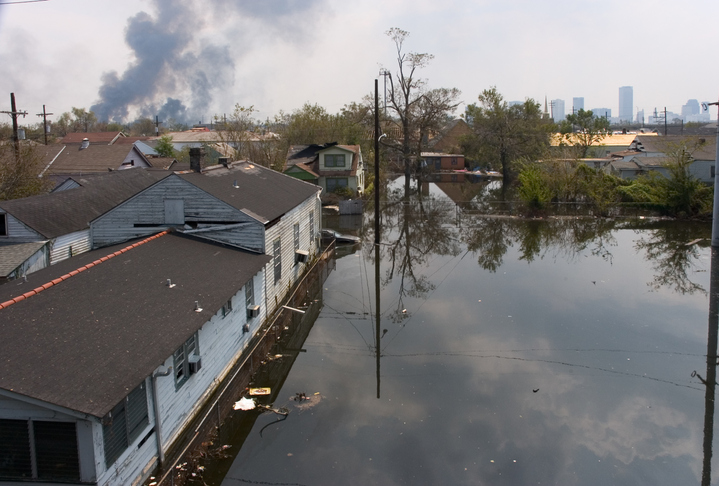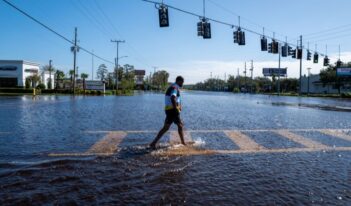
Scholars offer suggestions for how regulation can reduce disparities in exposure to environmental problems.
The U.S. Environmental Protection Agency (EPA) is charged with protecting human health and the environment. Some advocates argue, however, that not everyone is protected equally. Low-income communities and communities of color often face disproportionate environmental pollution.
In recognition of such disparities, EPA created an Office of Environmental Justice over 25 years ago. EPA recognizes environmental justice as “the fair treatment and meaningful involvement of all people regardless of race, color, national origin, or income, with respect to the development, implementation, and enforcement of environmental laws, regulations, and policies.”
Community activists argue, though, that the Office of Environmental Justice is more about publicity than concrete action. Disasters such as the Flint water crisis and Hurricane Katrina bring to light the reality of unequal environmental harms based on class and race. Community advocates and grassroots networks of environmental justice activists are established around the nation to address this problem that is still continuing today.
How can policymakers better address the disparate environmental impacts suffered by low-income communities and communities of color? This week’s Saturday Seminar highlights various scholarly critiques of past injustices as well as suggestions for ways to address this problem more effectively in the future.
Environmental Justice Policies and Their Impacts
- In an article for Yale Law & Policy Review, Brigham Daniels, Michalyn Steele, and Lisa Grow Sun, law professors at Brigham Young University, explore the costs of the environmental justice movement on vulnerable groups. For example, the authors assert that bans on wood-burning stoves may disproportionately inhibit low-income families from accessing affordable heat. To address these disparities, Daniels and his colleagues advocate for a “just environmentalism” approach, in which policymakers consider the burdens that environmental protections would place on vulnerable communities. They stress that their approach may result in “more effective, more efficient” environmental policy with burdens being placed on wealthier communities.
- In an article for Journal of Public Policy, Colin Provost and Brian Gerber analyze the effects of President William Clinton’s Executive Order 12898 requiring agencies to consider environmental justice concerns. Provost and Gerber conclude that presidential ideology and uncertainty around policymaking contribute to variable interpretations and uses of the executive order. They argue that there is a lack of “strategic objectives” and that there is “not adequate implementation guidance for regional administrators,” leading to “significant variation in its utilization across administrations.”
Public Health Disasters and the Law
- State legislators and city planners must acknowledge climate science and take measures to address disaster preparedness, aimed, in particular, at protecting low-income communities, argues Brie Sherwin of Texas Tech University School of Law. In an article for the Duke Environmental Law & Policy Forum, Sherwin asserts that despite recent hurricanes—which scientists have shown are due to climate change—“states continue to build in areas known to flood for the sake of economic development and tourism.” Low-income individuals are more likely to live in or move to these areas and are often hit hardest by the flooding and resulting environmental contamination after natural disasters.
- Michigan’s emergency manager law precipitated the Flint water crisis, the University of Michigan’s Paul Mohai argues. To improve the finances of struggling cities, the law permits Michigan’s governor to appoint an emergency manager whose decisions supersede those of many local officials. Flint’s emergency managers overrode a Flint City Council decision to switch the city’s water system to a safer source and initially dismissed evidence of lead contamination by activists. These emergency managers are held accountable to the governor rather than to the local community, which Mohai asserts denied Flint residents “access to, and meaningful involvement in, the government decision-making process.”
- Writing in the Harvard Environmental Law Review, Emily Benfer argues that the “wait and see” approach of federal law aimed at preventing lead poisoning places millions of American children at risk, and perpetuates socioeconomic, racial, and health inequalities. Benfer notes that current federal regulations do not provide for lead poisoning intervention until a child has experienced lead poisoning “at levels more than four times the Centers for Disease Control and Prevention standards.”
- In an op-ed, Andy Horowitz of Tulane University argues that revised maps of New Orleans from the Federal Emergency Management Agency (FEMA) blind residents to the physical and financial risks of future severe storms. The new maps may encourage homeowners to forgo flood insurance, Horowitz argues, which in turn could mean that when New Orleans experiences major flooding again, “thousands of people will be worse off than they were during Hurricane Katrina.”
The Saturday Seminar is a weekly feature that aims to put into written form the kind of content that would be conveyed in a live seminar involving regulatory experts. Each week, The Regulatory Review publishes a brief overview of a selected regulatory topic and then distills recent research and scholarly writing on that topic.



